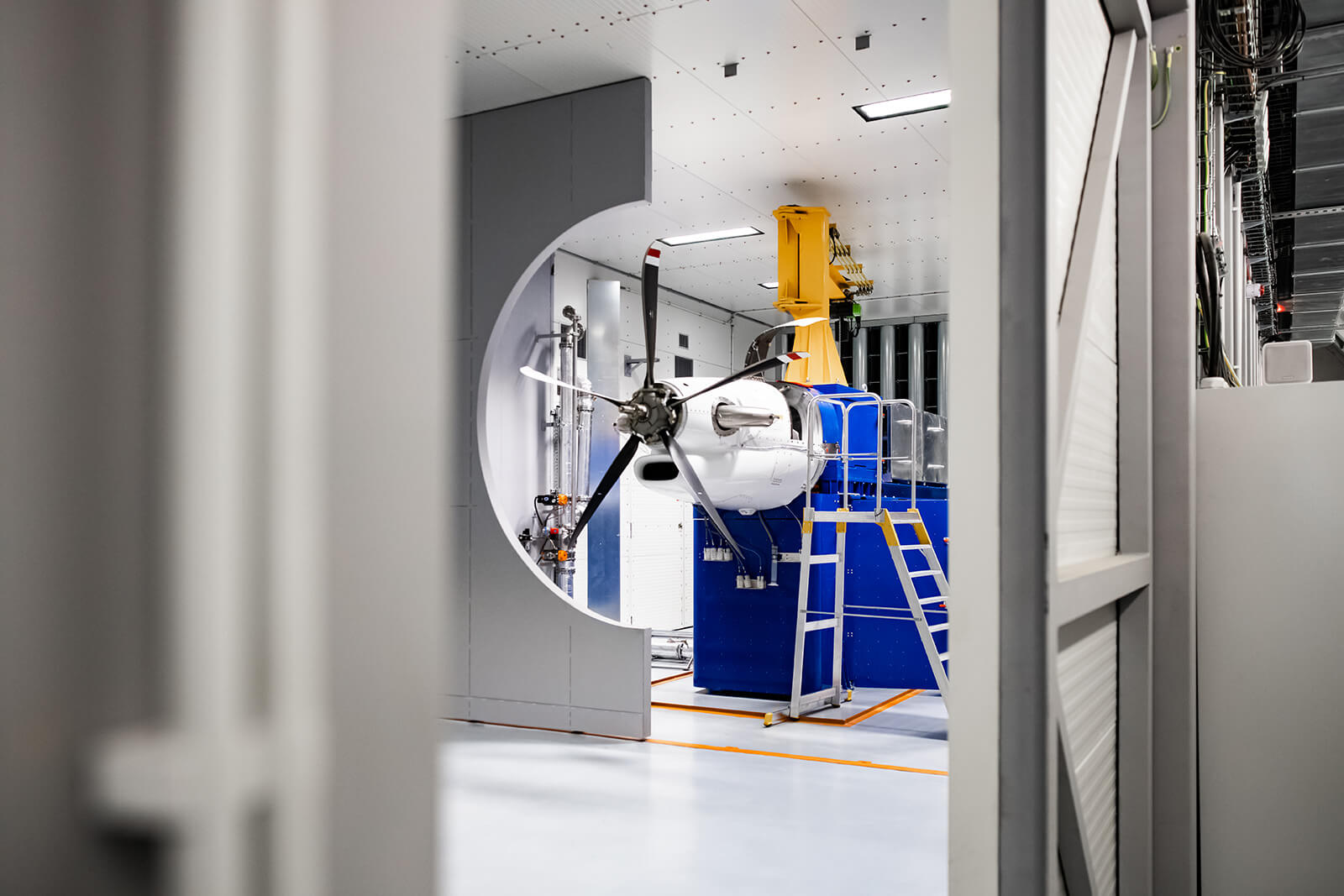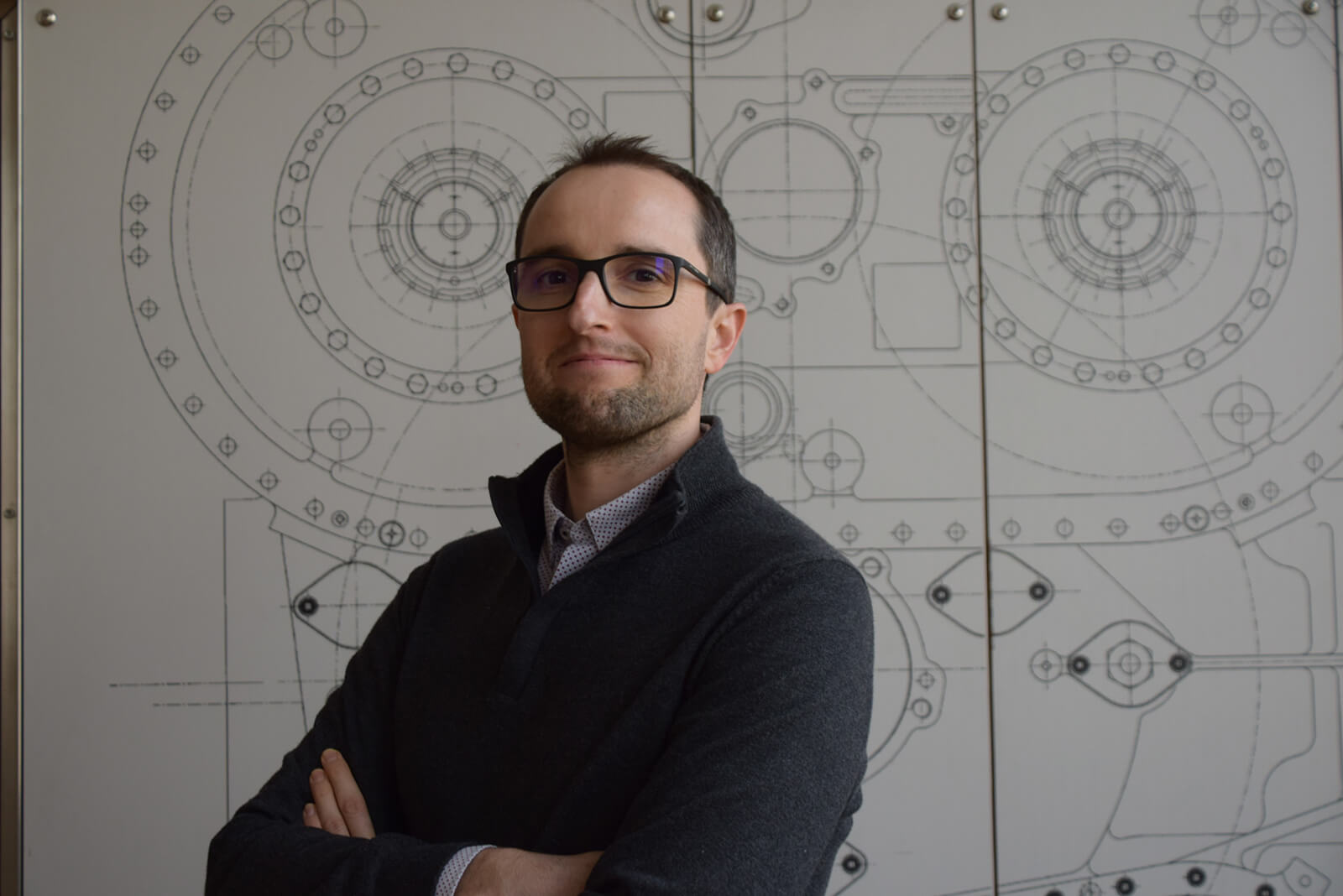Humans
Spanish Tech Leader, European engine
The engineer who in Avio Aero is leading the development of one of the most important projects in the European aviation industry tells why GE Catalyst is ready for defense applications.
Mar 2020
A Spanish aeronautical engineer is the technical leader of one of Europe's most advanced civil and military aeronautical projects. Jesús López Ruiz, 37 years old, Preliminary Design Technical Leader of Avio Aero, a graduate of the Polytechnic of Madrid, a master's degree from the Polytechnic of Valencia and a specialist in aeronautical propulsion at Cranfield University. This is the man responsible for managing and developing integration between aircraft, including UAVs (unmanned aerial vehicles), and the new GE Catalyst engine.
GE Aviation's turboprop engine, the result of a total investment of $400 million and now at an advanced stage of development and certification, was designed and developed entirely from scratch by the GE Aviation teams in Europe using exclusive European technologies and sees contributions from 6 countries, including Spain.
López Ruiz's role is particularly sensitive and, supported by a solid technical background resulting from more than ten years of experience in the field of advanced aeronautical propulsion, he oversees the adaptation of the standard version of the Catalyst engine to every possible future need military customers may require, especially for unmanned aerial vehicles, Trainers and Light Transport. The new turboprop engine lends itself to a wide range of uses, which is why it is conceived for both the civilian and military markets.
The engine, designed starting from a blank sheet by GE Aviation European Engineering teams with Avio Aero at the core, stands out in its reference class (900 - 1650 hp) for its performance, materials and new design choices. Of great significance is, first of all, its European character which - in addition to conferring its parentage, allows considerable benefits for technological growth to European industries - offers another fundamental competitive advantage: independence from ITAR (International Traffic in Arms Regulations) regulations. Catalyst is not subject to US export control and, for countries other than the US, the military variant of the Catalyst will only be subject to Italian export regulations.
"The Catalyst is a role model, a pan-European product with state of the art technology and performance, an exciting challenge I am proud to contribute to and which will be a highly valuable experience for the European industry," said Jesus Lopez Ruiz. “As a result of the collaboration with a partner such as Avio Aero, the engine has exceeded the most optimistic expectations in terms of performance and reliability and has optimal specifications for several of the most advanced uses. These uses include those related to UAVS, for which autonomy, reliability, the ability to operate at high altitudes for many hours, integration with on-board equipment are even more important.”
The Catalyst is the first engine in its category to have the Full Authority Digital Engine Control (FADEC) system that controls not only the engine but also the propeller. This allows for performance optimization at all flight speeds with a reduction in fuel consumption of about 15-20% compared to average. This is done through a single control point, giving the pilot an experience similar to that of a jet, where the pilot uses a single lever to control the thrust of the propulsion system.
It is a feature of great importance, especially for unmanned aerial vehicles because FADEC greatly simplifies integration with on-board avionics. Furthermore, other features new to the Catalyst class include the five compression stages, two of which are variable-geometry compression stages, and cooled, high-pressure turbine blades. These are elements that guarantee better performance, greater response to commands, and excellent reliability. Lastly, the turboprop also incorporates parts developed in additive manufacturing at Avio Aero's Italian plants. This technology reduces weight and increases performance in a sustainable manner.
"GE Catalyst is state of the art technology and performance, an exciting challenge I am proud to contribute to and which will be a highly valuable experience for the European industry"
The GE Catalyst features a compression ratio of 16:1, (the highest in its category), which determines high thermal efficiency and higher levels of performance with low consumption, along with 98 patented technologies, demonstrating its cutting-edge design in terms of innovation. To this point, the engine has accumulated over 1,650 hours of testing with over 1000 starts, 300 hours of testing dedicated to avionics integration, passed altitude tests up to 41 thousand feet (12,496 m) in May 2019, completed the first certification test in October 2019 and will complete the entire certification process by 2021.
“In the tests, the Catalyst has demonstrated excellent ability to provide more power and optimized performance at altitude. This is also possible thanks to a reduced front section architecture,” concludes Lopez Ruiz, “that allows a significant reduction in aerodynamic drag and therefore lower fuel consumption, a 10% increase in payload and approximately 3 hours more in-flight time than a typical UAV mission.”






